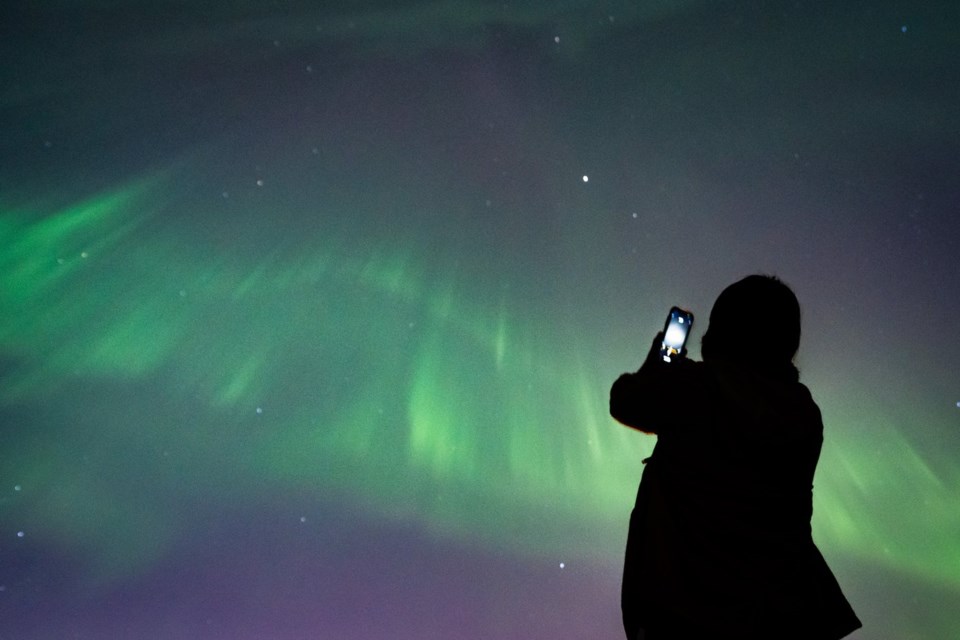The northern lights could return over parts of Canada as a sunspot that contributed to a recent stunning aurora display rotates back Earth-side, but don’t count on a big show in Greater Victoria.
The chances of another local spectacle like the one that played out a few weeks ago are “not great,” said Randy Enkin, president of the Victoria branch of the Royal Astronomical Society of Canada.
“The prediction is that it will be good further north,” he said.
Still, there is a possibility that something will emerge here.
“You can’t predict these things,” Enkin said. “It’s like the weather.”
The sunspot that last month unleashed a series of solar flares and the largest in nearly two decades has turned back toward Earth and let loose another powerful, but less intense, flare this week.
The nature of the activity means it likely won’t be known until about an hour ahead of time what will be seen at a given location, Enkin said.
The U.S. National Oceanic and Atmospheric Administration, which rates geomagnetic storms on a five-point scale, is forecasting a moderate G2 storm peaking on Friday, compared with the severe G4 storm in early May.
NOAA’s Friday night aurora forecast shows the view line, the most southern extent of where the northern lights might be seen, cutting across Toronto and through the Atlantic Region around Moncton, N.B.
The forecast shows a low likelihood of spotting the northern lights along a path from Vancouver through to Winnipeg and Thunder Bay, Ont., with a higher likelihood in northern parts of the provinces and territories.
Space Weather Canada also issued a major geomagnetic storm watch for what’s known as the auroral zone, a band covering much of the territories and northern parts of the provinces.



